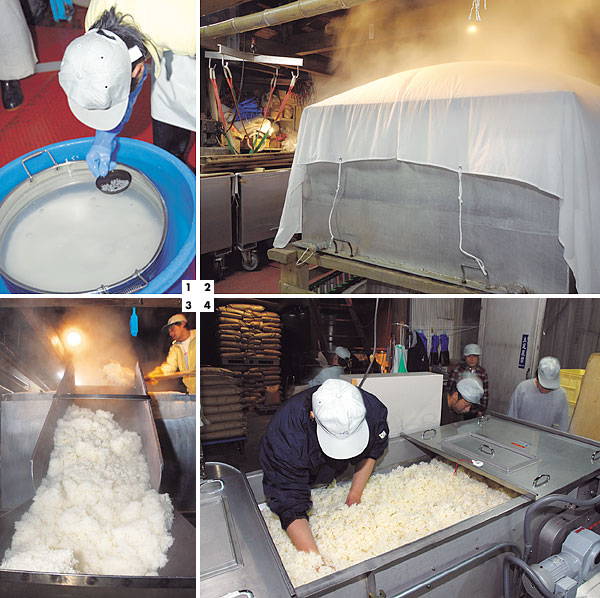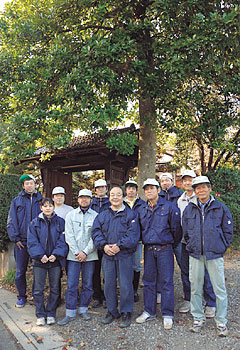Special Feature![]() Here’s to Japanese sake!
Here’s to Japanese sake!
A Visit to Shinkame Sake Brewery
So how do they make sake? This article takes you to Shinkame Brewery, about an hour from the heart of Tokyo by train, to find out. Shinkame is in an out-of-the-way corner of a residential district in Hasuda, Saitama Prefecture.
Written by Sanada Kuniko Photos by Kikuchi Kazuo and Kono Toshihiko
One sip and you will never forget the taste—dry, yet rich and mellow in character. Warm it up to savor the full-bodied texture, enticing flavor and fine acidic balance. It goes well with any meal.
Shinkame Brewery’s managing director, Ogawahara Yoshimasa, is respected by sake connoisseurs. His ancestors began brewing sake centuries ago—he is the seventh-generation owner—and he studied brewing techniques at university, too. He selects the best rice and follows traditional, tried-and-true methods to make the koji mold. There is another reason for his pure, great tasting sake: the long maturing process. Most breweries ship their product after aging it for six months to a year. “Most of ours ages for more than two years. That makes it richer, and gives it a full-bodied taste.”
Ogawahara’s keen desire for excellence is shared by his master brewer and eight workers. Inside the brewery there is a tension, a strong sense of dedication at every step of the manufacture of this living beverage. They work for half a year, from October to March, often sleeping at the brewery, rarely taking a holiday.
They start with the rice, polishing, washing, soaking and then steaming it. They also cultivate a koji mold, and prepare a moromi mash. When the mash is ready, they press it to obtain the liquid alcohol. This is then filtered, pasteurized and bottled.
The process is long and stretches into the coldest time of the year. When it is cool, unwanted bacteria cannot reproduce easily, and fermentation occurs slowly, making for a better-tasting sake.
It is almost four o’clock in the morning and the city is still asleep. Inside the brewery, a single light shows a white vapor rising from the large vats. Yesterday the rice was being soaked. Now the next batch of sake is on its way.
The Long Journey from Polishing to Bottling

First, the rice is polished and washed. Then it is soaked (1), and drained in a sieve. A stopwatch is used to time these steps, because the water content in the rice helps determine the final quality of the sake. The following morning the rice is steamed (2). When the workers are sure it is ready, they remove it from the steaming vat with a large scoop (3). Next comes cooling. This is done early in the morning (4), when temperatures are at their lowest for the day.
